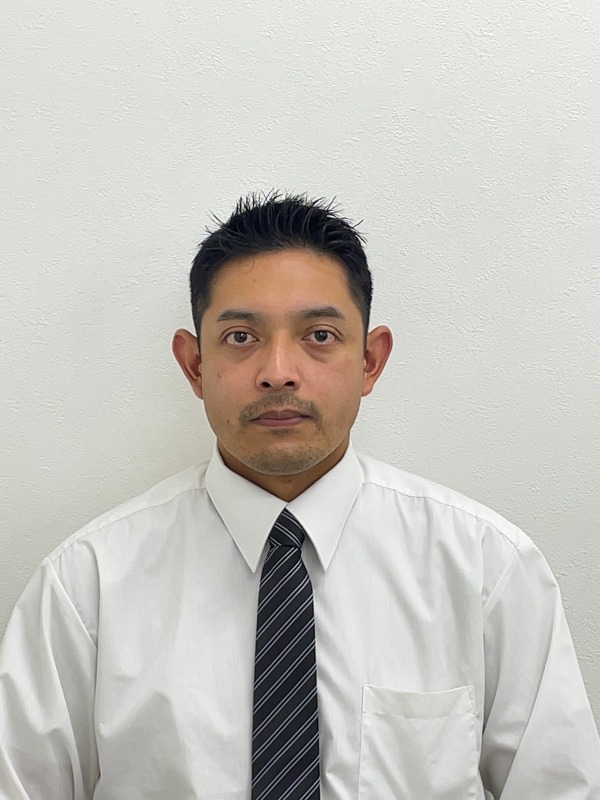Shizuoka Seibu Motor Driving School Brazilian Driving Instructor
Alberto Takada Silva
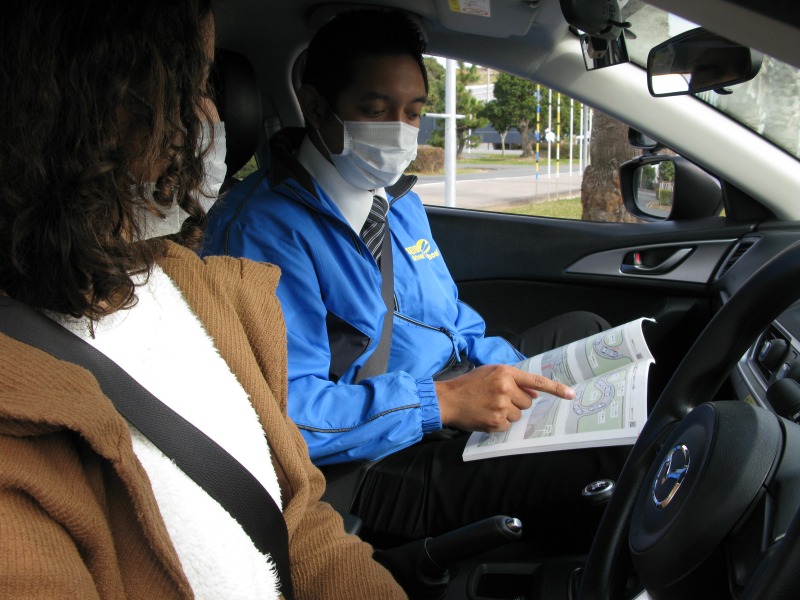
Having Japanese grandparents,I always felt close to Japan growing up
The Shizuoka Seibu Motor Driving School located in Hamamatsu’s Ohitomi-cho is an uncommon sight in Japan – a motor school providing driving lessons exclusively in Portuguese to its 500 yearly graduates. The Shizuoka Seibu Motor Driving School has three Brazilian driving instructors who support foreign residents struggling with Japanese in getting their license. Today, we welcome our guest Alberto Takada Silva, a driving instructor who came to Japan from Brazil at the age of 8 and began working at a factory after graduating middle-school. We will be talking to him about his experiences and thoughts on his job and living in Hamamatsu.
What brought you to Japan?
When I was growing up my family was separated, as my mother ran restaurant in Brazil and my father worked in Japan. When I was 8, we entrusted the restaurant to family friends and decided to move to Japan – to prioritize spending time together as a family.
So you didn’t have any issues with moving to Japan?
As my grandparents were Japanese, I had grown up with a real affinity for Japanese food, and had memorized a couple of Japanese words, so moving to Japan didn’t really bother me. I was a bit insecure in my speaking, as my language skills weren’t perfect, but as I was with my family it wasn’t that big of a deal.
What surprised you the most when you came to Japan?
I was so surprised at how clean Japan is and how there is no litter on the streets. In Brazil, the streets are covered with litter and nobody bothers to clean it up. Apart from that, the neatness and tidiness of food packaging was also surprising. I thought that the packaging for onigiri at the convenience store was very innovative and showed that a lot of thought had gone into it.
It says here that you didn’t go to a Brazilian school, but went to a Japanese elementary school instead?
Whilst I understood some individual Japanese words, I was completely lost when it came to written Japanese. I attended Japanese elementary school from the age of 8, and my teachers at the time gave me a Pokémon game as I couldn’t understand any Japanese. I really wanted to complete the game and read a lot of Japanese books, so my writing and reading improved pretty quickly – I had pretty much mastered Japanese in just one year. I think that was the result of me seriously aiming my Japanese study towards things I liked – and I’m really thankful for my teachers and friends.
It’s been 25 years since you came to Japan and 7 since you came to Hamamatsu – what do you think of the city?
I lived in Nagano and Yamanashi before coming to Hamamatsu, and I currently live in Miyakoda-cho. Miyakoda is full of nature like rivers and mountains, so I think it’s a good environment for children to grow up in. The air here is also clean and it’s a very easy place to live.
After graduating middle-school, Alberto began working as a regular employee at a factory. The work was very physically demanding, and Alberto was unsure if his body would hold up until retirement. He decided to speak to his friends and the consultants at HICE to find a job which he could work for the rest of his life. It was here that he came across the job “driving instructor”. To qualify as an instructor he had to pass a difficult test, but he studied fervently and on his fourth try passed the test flying colors in all subjects. As of now, he has been working as a driving instructor at a driving school for 6 years. In the following second half of this interview we will talk to him about the details of his job.
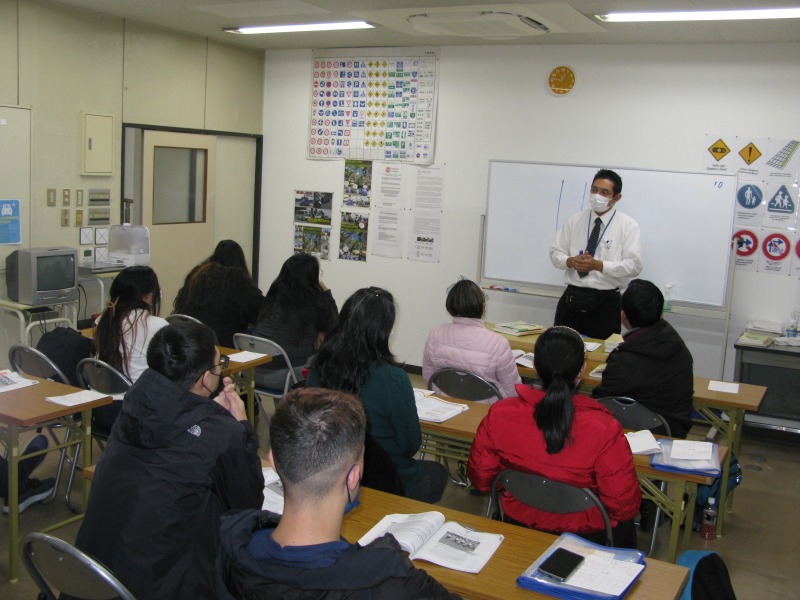
I’m proud to have a job
Which I get thanks for doing
I hear that you have to pass various tests to become a driving instructor…
Yes, they’re run by the prefectural public safety commission and test your knowledge of compulsory subjects, laws, and technology. I heard that it’s even rare for Japanese people to pass it on their first try. It took a year for me to pass every subject one by one.
How did you feel when you actually started the job?
Traffic regulations are different in Japan and Brazil, so at first I was confused as to which explanation would be the easiest to understand. As I got more experience, I learned to tell which words I can use with which students, based on their level of understanding. I also didn’t want to waste my student’s time, as they had all taken the time to come to the driving school.
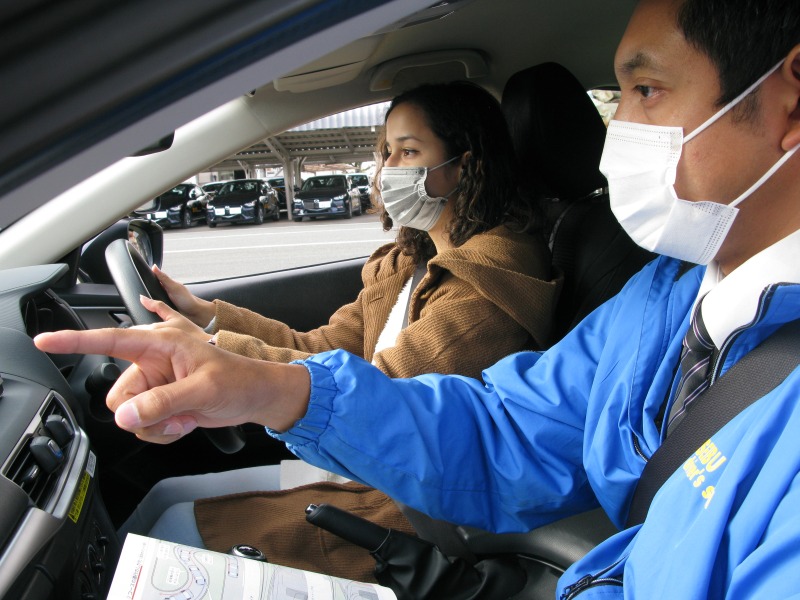
Did you have a moment that made you think “I’m glad I became an instructor”?
I hear a lot of Brazilians say “I can’t find a job without a driving license”. As their livelihoods are on the line, they are all really trying their hardest to pass. I’ve had some students who have cried with joy when they received their license, so I’m really happy to have such grateful students. During my time at the factory, I would often imagine the faces of the customers buying the products, but as I could never directly meet them it just wasn’t the same. But as an instructor I work directly with my clients, so it’s a very fulfilling position.
Japan has very strict traffic regulations, right?
Being an instructor for foreign residents, I’ve researched the level of Japan’s traffic regulations and Japan actually ranks 3rd in the world for strict traffic regulations, following Canada and Switzerland. As there are many narrow roads, the rules themselves are also very ‘narrow’. When making a right turn at a large intersection in Brazil, there is no diamond‐shaped line, so you can’t wait in the center of the road, as in Japan. Many Brazilians are shocked when I teach them that in Japan you continue to the center and make a right turn along the diamond shape.
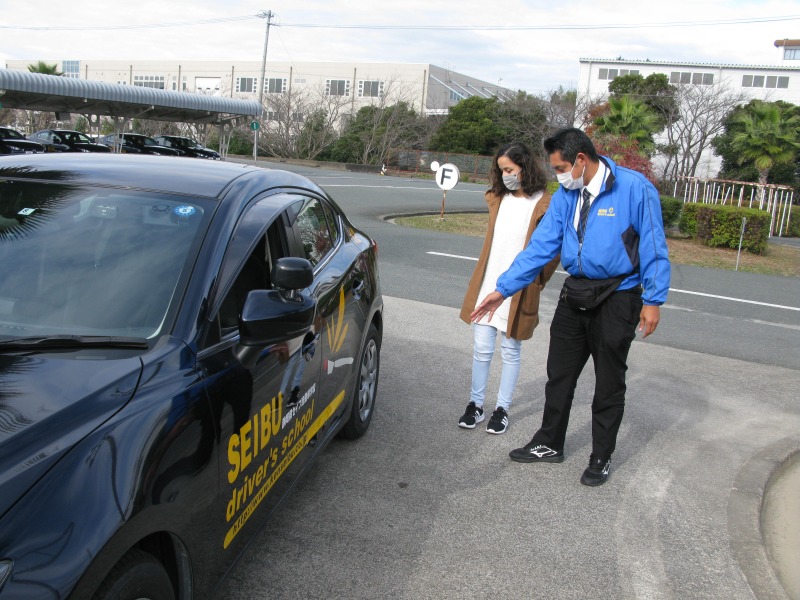
So, what’s next?
As of November 2022, our students are now able to study up until their diploma at the Shizuoka Seibu Motor Driving School. We have three Brazilian instructors, and one Brazilian staff member at reception. Even if Japanese is not your strong suit, you can still get your license in Portuguese. I’d love to welcome more Brazilian students and help them get their license. My reason for switching careers 5 years ago was to find a “company where I could work for life” and my current job suits me well, so I think I’d like to work at Shizuoka Seibu Motor Driving School until I retire.
I’m looking forward to hearing all about what you get up to next. Thank you for coming today!
Alberto Takada Silva (33)
Born in Pará, Brazil
Moved to Japan at 8, became a factory worker after graduating middle school
Transferred to Shizuoka Seibu Motor Driving School
Supporting Brazilian residents in obtaining their driving license
